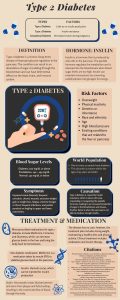
Starting off in the gym for many people is merely an idea and a quick sell of New Year’s motivation or encouragement from social media. For me and many others. I had started going to the gym mainly and simply because I was heartbroken and it created this urge to become better every day. If I could be 1% better every day I would not mind the hard work. Thus, an unbreakable discipline for the gym had begun.
Some people decide to change their lifestyle by going to the gym with the goal of looking better, which can certainly be done with hypertrophy training. Hypertrophy training is essentially weightlifting in a way that causes stress to the muscle that elicits muscle growth. Many people at the beginning of their journey say they want to be “toned.” This is not a real thing and is simply having the body composition some muscle definition due to less body fat and muscle growth. However, to get that muscle definition, some training must occur to elicit muscle growth.
There are a number of ways to approach weightlifting, but very few techniques bring long-term health benefits as well as physical appearance satisfaction. The terms bodybuilding and power building seem to be conflated but are two very different things. Bodybuilding, in its essence, is how well you can sculpt your body by building up the muscles with symmetry and then stripping away the body fat. While power building is a sport in which a competitor produces such an amount of force they are then lifting a considerable amount of weight. Most people don’t start exercising with the intent to be bodybuilding or power building but simply to better their health and habits.
For those who intend to better their physique and are just starting off, asking a friend or going on social media to begin their journey is a common thing to do. In fact, I myself had done the same thing by mindlessly following training programs from friends but later decided to learn as much as possible about exercise and sport science in the realm of bodybuilding. i learned that even some qualified personal trainers do not know what they are talking about and waste the time of their own clients by performing exercises with improper form and technique. I believe it is important to educate oneself greatly in what one desires using research and understanding what the science says rather than “bro science.”
If one desires to be “toned,” bodybuilding would be a better approach, simply because it is about physical appearance rather than a performance goal. During training, range of motion (ROM) is considered. It is commonly endorsed within the bodybuilding community to apply full ROM during any exercise that entails hypertrophy training, while partial repetitions (reps) are widely disliked. However, how much does ROM play a role when training, and is it possible that partial reps could implemented to induce hypertrophy, providing someone with the desired physical shape?
To envision ROM, think of bicep curls as an example. In a standing position, imagine holding a weight in your hand with your arms straight down to your sides. Think of your elbow in the starting position being at full lockout or 0 degrees. Then, at the best of your ability, curl the weight up to 180 degrees, which is the top of the exercise. Once at the top, you can control the weight down back to the starting position at 0 degrees. The proper terminology for bringing the weight up and down would be concentric and eccentric. Concentric means contracting the muscle to a shortened position at the top of the exercise. While eccentric would be lengthening the muscle while still contracting, bringing the arm to the beginning of the exercise. Therefore, ROOM is the ability to stretch or lengthen the targeted muscle as much as possible in a safe yet challenging range to then shorten the targeted muscle to the best of the individual’s ability.

When we are caught up in changing our physical appearance or solving daily problems, we don’t always understand how exercise can really work and why hypertrophy training really works. Research and literature support the use of concentric+eccentric exercises when weightlifting.
It’s commonly practiced to perform the concentric aspect of an exercise like the bicep curl as fast as possible while controlling the eccentric instead of letting the weight drop because the eccentric is more important than concentric. A study compared the differences between concentric+eccentric, eccentric-only, and concentric-only training. 1 In this study, three different training groups were used. One group did both the lengthening and shortening of the muscle portion of an exercise. The second group only completed the shortening of the muscle portion of an exercise. Meanwhile, a third group only did the lengthening portion of an exercise. These groups all did exercises with their elbow flexors.
It’s important to remember that the concentric+eccentric group completed double the volume compared to the concentric-only and eccentric-only, because they worked both aspects of the ROM. In the end, the concentric-only group showed that loading the concentric portion of the exercise had done little to increase the thickness and size of the muscle. While the eccentric-only group showed similar results compared to the concentric+eccentric group,, regardless of the fact, the volume for the eccentric-only group was half of the volume for the concentric+eccentric. It’s also important to note this similarity was shown while the eccentric was put into long muscle lengths, meaning when the muscle was lengthened at the beginning of the exercise. This helps illustrate why it is important to understand the science and not mindlessly move weight around or fully listen to comments without research.

Exercise effectiveness is being evaluated all the time. The study discussed earlier showed the eccentric was effectively similar to the concentric+eccentric but had specified it being in the lengthened position. This could be a first step in suggesting ROM in hypertrophy training. Sure enough, some studies support this idea, that muscle hypertrophy is induced by the muscles contracting at a lengthened position. Two studies were conducted to support the suggestion that the lengthened portion of a lift is the most important portion in ROM. One study followed untrained women, while another followed trained women. 2 3 In the study with the untrained women, the method of training was to have one arm trained to do a bicep curl from the initial ROM (0-68 degrees) while the other arm was to do the final ROM (68-138 degrees). Training sessions lasted for 3 days every week for a total of 8 weeks. The results showed that the initial ROM of the exercise had induced a higher amount of distal hypertrophy. In tandem, the other study held with trained women showed similar results. This study had thirty-eight women complete four sets of twelve reps for nine weeks. In the end, it showed that there was more muscle growth in the preacher curl exercise when the stress was most focused on the lengthened position of the exercise. These two studies show that muscle growth is most evident when the participant’s target muscles are lengthened and when the contraction of the exercise is done at the bottom of the lift. Meaning there’s most muscle growth during the beginning of the exercise. Knowing this raises the idea of a partial range of motion used during repetitions, and if doing partial repetitions, it induces muscle growth.
There are additional studies that could also support the idea of partial ROM training. The study “Which ROMs Lead to Rome? A Systematic Review of the Effects of Range of Motion on Muscle Hypertrophy”, showed that the partial range of motion in the shortened positions was not as effective while the partial range of motion in the lengthened position and full ROM were producing similar results. 4 It concluded with the statement saying that training at either partial ROM or Full ROM will induce hypertrophy but at longer muscle lengths. The keyword to keep in mind is “either”, meaning that you can choose one of both ROMs. Therefore, because of the limited research, it is only suggested that partial ROM could utilized but also incorporate partial and full ROM in one’s training program. Another study, “Partial Vs Full Range of Motion Resistance Training: a Systematic Review and Meta-Analysis”, concluded on a similar note, stating there was also growth in both long ROM and Full ROM. 5 In addition, the differences between the growth from full and partial ROM were insignificant or trivial. This gives a suggestion partial ROM could give about the same amount of growth as full ROM Therefore, partial range of motion training could be implemented as a viable alternative way to train if the situation calls for it.
It is clear that to increase muscle growth, stressing the muscle, especially in the lengthened portion, is crucial in the eccentric portion of the exercises. Although it is with limited research and more is required, we could softly suggest that a partial ROM in the lengthened portion could be utilized for muscle growth. Within my own experience, after experimentation, I noticed a significant amount of progress in implementing this research in my workout programs. This generated the results I sought and, in turn, allowed me to develop a more positive overall attitude. This supports the recommendation that research is an important aspect of becoming and staying educated both for trainers and anyone with a desire to improve their overall wellbeing through physical fitness.
- Sato, Shigeru, et al. “Comparison between Concentric-Only, Eccentric-Only, and Concentric-Eccentric Resistance Training of the Elbow Flexors for Their Effects on Muscle Strength and Hypertrophy.” European Journal of Applied Physiology 122, no. 12 (December 1, 2022) ↵
- ZABALETA-KORTA, A. et al. Regional Hypertrophy: The Effect of Exercises at Long and Short Muscle Lengths in Recreationally Trained Women. Journal of Human Kinetics. ↵
- Pedrosa, Gustavo F. et al “Training in the Initial Range of Motion Promotes Greater Muscle Adaptations Than at Final in the Arm Curl.” Sports (2075-4663) 11, no. 2 (February 1, 2023). ↵
- Kassiano, Witalo. et al. “Which ROMs Lead to Rome? A Systematic Review of the Effects of Range of Motion on Muscle Hypertrophy.” Journal of Strength and Conditioning Research, January 18, 2023. ↵
- “studies from Solent University Add New Findings in the Area of Hypertrophy (Partial Vs Full Range of Motion Resistance Training: a Systematic Review and Meta-Analysis).”Health & Medicine Week, March 24, 2023, 6396. ↵



2 comments
Lauren Sahadi
This was a very different article that I haven’t seen a lot of. Learning about hypertrophy training was very beneficial for people who are trying to build muscle. There could be a little more information, but it’s very good for a peak into hypertrophy training and how to optimize your workout routine. I really liked this article and it was a nice change of pace. Great job.
Nicholas Pigott
Hi Christian! This topic is not my strong suit, but it only made the article that much more interesting. You wrote a great informative article that digs into the ways of how ROM can help increase muscle growth. I especially love your conclusion in which a recommendation for research is needed. I’ll need to keep this in mind for the gym, great work!